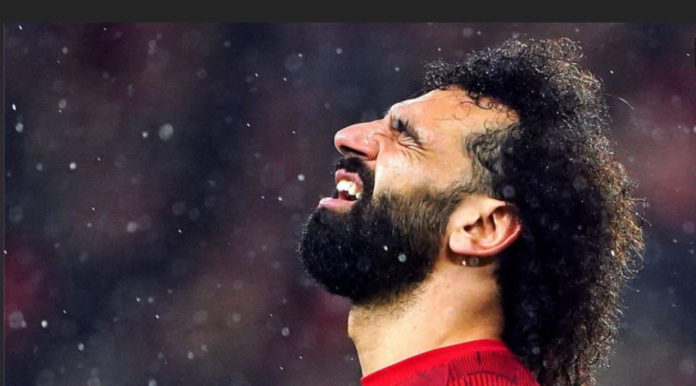Mo Salah’s return from the Africa Cup of Nations was decided upon with his best interests in mind, according to Liverpool assistant manager Pep Lijnders, as the star looks to make a quick recovery from a hamstring injury.
Following an agreement between the club and the Egyptian football organisation, Salah returned to Liverpool to begin an “intensive rehabilitation programme” following a muscle injury he sustained during Egypt’s draw with Ghana last week.
Salah’s injury is “worse than first feared,” according to a statement from Liverpool, and the team promised to get him “back in action as soon as possible for club and country, giving him the best chance to return to compete at AFCON” should Egypt advance to the tournament’s latter rounds.
The AFCON final is scheduled for February 11. Liverpool manager Jurgen Klopp recently said that if Salah heals in time to play for Egypt in the final, he will “probably” return to international action.
Salah’s return to Liverpool has drawn criticism; some contend that the national captain of Egypt ought to stay in the squad to help his teammates.
Lijnders, however, is sure that the decision was taken with the intention of enabling Salah to recuperate in time to participate in the championship game should Egypt advance. He claims the situation is an uncommon illustration of a club and national team cooperating well.
“You should never doubt Mo Salah’s commitment,” he said. Nobody I have ever met is more dedicated to the game of football.
“I am aware that the loss of their captain and top scorer has saddened their nation, but our medical staff and their medical team felt he should return here in order to offer him the greatest chance of being fit for the final should Egypt advance.
“After a thorough scan, doctors discovered a genuine tear in his hamstring, which might take three to four weeks to heal if everything goes well.
“I am quite pleased that the medical teams from Egypt and Liverpool collaborated, kept in constant communication, and came to a conclusion together.
“It serves as an illustration of how club and international football can work together to prioritise the player.”
The way it works is that each of us decides what’s best for him. a facility with a steady atmosphere and individuals who are willing to commit to the rehabilitation process.
Lijnders’ remarks follow Graeme Souness, a Liverpool icon, pleading with Klopp to stop Salah from reuniting with the Egypt team when the team leads the Premier League by five points over defending champion Manchester City.
According to Jurgen Klopp, who works for Liverpool, his responsibility is to put the football club’s interests first.
Salah must return to full fitness for Liverpool before he leaves for Africa.
“Jurgen, he’s playing the game there; he needs to make all the appropriate noises.” It’s the traditional case of club versus nation.
“Players detest hamstring injuries the most; they are the worst.” When it comes to hamstrings, the legendary Bob Paisley would say it is a six- or eight-weeker. I was never accused of being a sprinter; therefore, I only ever had one.
“What they can do to you is give you a two- or three-week recovery period, after which you return and train for a few weeks before declaring yourself ready.
“You go whack and it goes again ten minutes into a game, so those are the injuries that really confound players and medical professionals because you never know how serious they are.
“As a fan of Liverpool, I oppose his return.”
Six days after a challenging journey to third-place Arsenal, Liverpool is set to play struggling Burnley on February 10, the day before the AFCON final.
